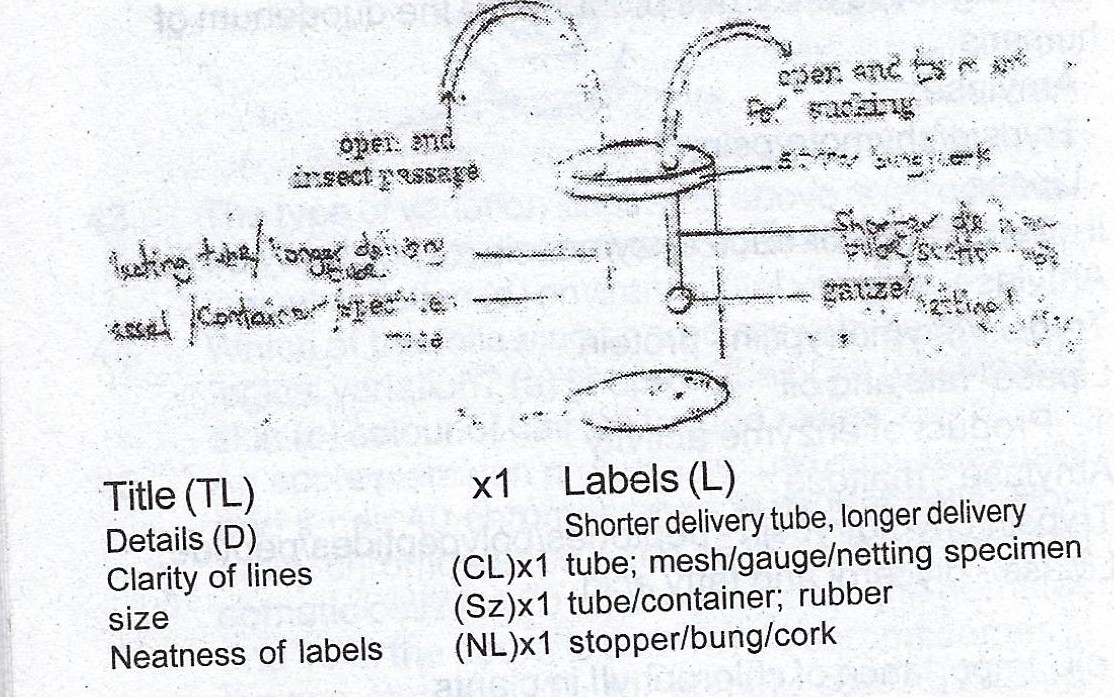(a) Name one instrument used for collecting:
(i) soil organism from a soil sample
(ii) tiny insects from a leaf or a stem.
(b) make a diagram 6 cm – 8 cm long of the instrument named in (a)(ii) above and label fully.
(c) Explain briefly the relationship between three examples of symbiotic organisms.
Explanation
(a)i. Instrument for collecting soil organisms from a soil sample
- Sieve
- Tullgren funnel
ii. Instrument for collecting tiny insects from a leaf or stem
- Pooter
(b) Diagram/drawing of pooter

Quality (0)
Stopper/rubber bung with two openings (RO) x1
Two delivery tubes one longer than the other x1
Inner end of shorter delivery tube with mesh/gauze(IM) x1
(c) Symbiotic relationships in organisms
Trichonympha Protozoa living in the gut of a termite;
Helps the termite to digest cellulose; while the protozoa trichonympha gets protection and food in return from the termite.
Sea anemone attaching itself to the shell of hermit crab; thereby enjoying pieces of leftover food therein. The hermit crab in turn enjoys protection against predators/ the sea anemones stings prevent the predators from harming the hermit crab.
Algae and fungi in a lichen; Lichen is made up of a fungus and a unicellular alga living together. The green alga produces food/photosynthesis for the association; the fungus protects the alga/absorbs water from the surrounding.
Rhizobium sp Nitrogen- fixing bacteria and root modules of leguminous plants. The Rhizobium fixes atmospheric nitrogen directly into the plant while rhizobium enjoys shelter/food/nutrients from the plant.

